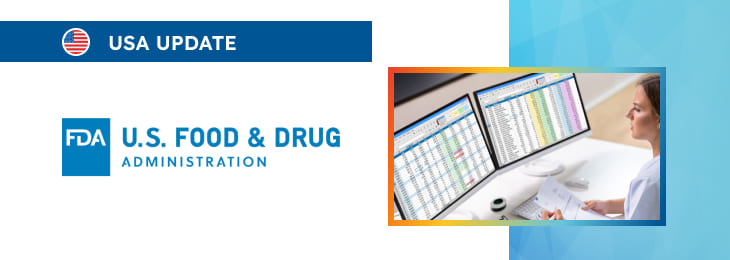The new article highlights the key points related to the actual implementation of the information collected from patients in the form of feedback.

Table of content
The Food and Drug Administration (FDA or the Agency), the US regulating authority in the sphere of healthcare products, has published a guidance document dedicated to incorporating voluntary patient preference information over the Total Product Life Cycle (TPLC). The guidance provides a general overview of the applicable regulatory requirements, as well as additional clarifications and recommendations to be taken into consideration by medical device manufacturers and other parties involved in order to ensure compliance.
At the same time, provisions of the guidance are non-binding in their legal nature, nor are they intended to introduce new rules or impose new obligations. The authority explicitly states that an alternative approach could be applied, provided such an approach is in line with the existing regulatory framework and has been agreed with the authority in advance.
Introduction to PPI in the Product Life Cycle
As it was mentioned before, the FDA recognizes the value of integrating Patient Preference Information (PPI) and other forms of patient input throughout the total product life cycle of medical devices. This input can guide various stages, from discovery and design through clinical testing and postmarket monitoring, by shaping device attributes, clinical trial designs, and benefit-risk assessments.
Incorporating PPI ensures that patient needs and preferences are considered at key decision points, ultimately leading to more patient-centered products.

Incorporation of PPI in Different Phases of Development
The document further describes various ways in which PPI could be implemented in different development phases.
- Nonclinical (Discovery, Ideation, Invention, and Prototyping):
During the initial phases of discovery and ideation, patient input can guide the design of devices by revealing the types of benefits and features most valued by patients. This qualitative input helps identify areas of unmet need, ensuring that developers focus on the attributes patients prioritize. As developers move into the invention and prototyping phase, patient-sensitive design inputs can refine the device design, enhancing usability for the intended patient population. User-centered design, informed by direct patient feedback, ensures the device meets the practical needs of end-users.
- Clinical:
PPI plays a critical role in shaping clinical trial designs. By incorporating patient input on study endpoints, visit schedules, and follow-up procedures, trials can become more patient-friendly, reducing barriers to enrollment and improving retention. Qualitative patient input helps determine which endpoints matter most to patients, while quantitative PPI informs the required level of benefits patients expect in exchange for accepting specific risks. For example, a PPI study on weight loss devices helped define the “minimum clinically meaningful benefit”, which directly impacted the sample size and other clinical trial design factors.
- Postmarket:
Once a device is marketed, PPI helps ensure that benefit-risk information is communicated effectively to patients and healthcare professionals through labeling and shared decision-making tools. As more data is gathered postmarket, ongoing patient input can further refine benefit-risk assessments, informing potential innovations, design improvements, or expanded indications. PPI plays a key role in monitoring real-world performance and guiding device improvements based on user feedback.
Building Upon PPI Across the Product Life Cycle
PPI should not be viewed as a disconnected or isolated dataset; instead, it can be built upon throughout a device’s life cycle. Early qualitative insights may inform both design and clinical trial planning, which in turn leads to quantitative studies that contribute to benefit-risk assessments.
PPI collected at each stage informs future phases, guiding premarket applications such as IDEs, PMAs, 510(k)s, HDE applications, and De Novo classification requests. This iterative process ensures that patient preferences are integrated into the product development and regulatory review process at every stage.
Methods for Eliciting Patient Preferences
The scope of the guidance also covers the most important methods of eliciting patient preferences.
According to the guidance, they include:
- Stated Preference Methods:
Stated preference methods, such as discrete choice experiments (DCE), best-worst scaling (BWS), and threshold techniques, are commonly used to quantify patient preferences by asking them to make choices between hypothetical scenarios. These methods simplify complex decision variables and are useful for measuring tradeoffs between benefits and risks. However, stated preference studies can sometimes suffer from hypothetical bias, where the scenarios presented may not be fully relevant to the actual patient experience. Design techniques can mitigate this bias, ensuring more reliable results.
- Revealed Preference Methods:
Revealed preference methods rely on observing actual choices patients make in real-world scenarios, avoiding the hypothetical bias present in stated preference methods. However, these methods are limited to situations where patients have already experienced the device or its alternatives. When a new device is still in development, revealed preference methods may not be applicable. Additionally, financial and other external factors may bias revealed preference data. Despite these challenges, revealed preference studies provide valuable insights when they can be applied.
- Importance of Qualitative Research:
Qualitative research is essential in supporting quantitative PPI studies. Engaging patients early through interviews, focus groups, or other qualitative methods helps define the attributes and levels that should be included in later quantitative studies. This process ensures that the attributes being measured are relevant to patients and understandable. Qualitative methods are also useful in pre-testing survey instruments, where patients verbalize their thought processes to ensure that they comprehend the questions and can make tradeoffs between attributes.
Quantitative Methods for Eliciting Tradeoffs
Quantitative methods, such as DCE, BWS, and the threshold technique, are widely used to quantify tradeoffs patients are willing to make between different device attributes. The choice of method depends on the research question, the number of attributes being measured, and the sample size.
For instance, DCE is useful when multiple attributes need to be evaluated independently, while the threshold technique is suited for estimating the minimum acceptable benefit (MAB) or maximum acceptable risk (MAR) for a single attribute. Each method has strengths and limitations, and the selection of the appropriate method should align with the study’s goals.
Early-Stage Patient Input
In the discovery and ideation phase, open-ended qualitative methods such as focus groups, public meetings, or workshops can gather valuable insights into patients’ disease experiences and treatment needs. This input helps frame the questions for later studies and informs device development.
For example, early qualitative data might reveal what disease impacts are most important to patients, shaping the focus of future clinical trials and quantitative PPI studies.
Building Data Collection Tools
Early qualitative insights also support the development of data collection tools like Clinical Outcome Assessment (COA) tools or Patient-Reported Outcome (PRO) instruments. These tools enable more precise measurement of patient impacts in clinical trials, allowing sponsors to capture the benefits and risks that matter most to patients.
The data collected from these studies contributes to the overall evidence submitted to the FDA for device approval, helping regulators assess product safety and effectiveness.
Conclusion
In summary, incorporating PPI throughout the product life cycle ensures that devices are designed, tested, and marketed with the patient’s needs and preferences in mind. This comprehensive approach enhances patient-centered product development and informs FDA decision-making across the total product life cycle.
How Can RegDesk Help?
RegDesk is an AI-powered Regulatory Information Management System that provides medical device companies with regulatory intelligence for over 120 markets worldwide. It can help you prepare and publish global applications, manage standards, run change assessments, and obtain real-time alerts on regulatory changes through a centralized platform. Global expansion has never been this simple.

